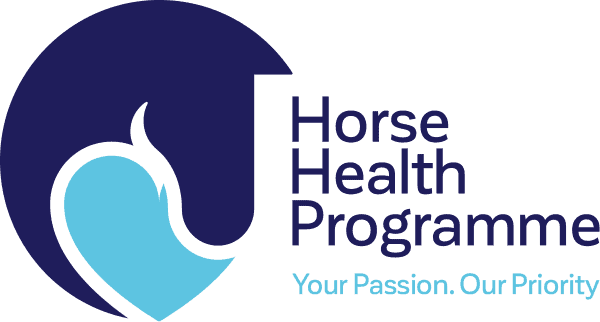Equine Myths
As owners and perhaps competitors, we have many responsibilities towards our horses. This includes feeding and caring for them properly, and addressing any injuries or illnesses, but that responsibility doesn’t stop at the stable door. We also have wider responsibilities within the equine community – mainly to not cause or allow harm to others through our own actions, or inaction. Even those of us that are familiar with all things horsey may still be deceived by some common myths surrounding horses. It’s important to identify and discredit myths that have endured for years because it could impact on your horse’s health, happiness, and performance.
Myth – Horses must be wormed every 4-6 weeks
The best way to control your horse’s worm burden is to implement a targeted worming programme and monitor the worm burden through faecal worm egg counts and other tests available. Your horse can then be wormed appropriately if required. By only worming your horse when necessary to do so helps to reduce resistance to the drugs used in wormers and is better for your horse. Worming your horse with the correct dose for their bodyweight is also important to ensure its effectiveness.
Your vet will be happy to provide advice on a suitable worming programme for your horse. For further information on worming:
Types of worms which affect horses >
Faecal worm egg counts (FWEC) >
How to take a faecal worm egg count >
Myth – A horse only needs to be vaccinated for influenza if it competes
Even if you don’t go out competing with your horse, don’t think it couldn’t happen to you.
It‘s easy to overlook the importance of influenza as a disease as outbreaks are relatively rare. However the disease is debilitating for your horse and can be distressing for you to witness. Influenza is an airborne virus and can spread quickly and easily through a yard and as such your horse doesn’t need to leave the yard to be at potential risk. Under favourable weather conditions influenza can spread up to 5km.
Myth – It’s better to not pick out a horse’s feet during wet, muddy conditions as the mud that is already in the hoof keeps the foot dry
A horse’s hoof is a living structure that requires daily care to stay healthy.
It’s important to clean dirt and manure from the underside of the hooves as well as lodged stones and small sticks that can cause discomfort and bruising. If wet mud remains in place it will keep the sole and frog damp for an extended period of time. This results in the horn structures becoming soft and potentially not as resilient as they could be. In addition, by cleaning the feet out it allows the hooves to be checked for any signs of injury or infection.
Myth – hot and cold blooded breeds have different body temperatures
The terms hot, cold and warm blood refer to the temperament as well as the workload horses are best suited to, not their actual blood temperature.
All horses are mammals, and are scientifically classified as being warm blooded. Historically, hot blooded horses are generally bred for their speed, agility and intelligence. Cold blooded horses are exclusively draft horses, being large, muscular and sturdy with a calm temperament. Warmbloods are crossbreeds of cold blooded and hot blooded horses.
Myth – horses always sleep standing up
While horses do snooze while standing, they do also sleep while lying down.
When standing, a horse will doze as they have a functional aspect to their bodies, known as a “stay mechanism” that allows their muscles to relax without resulting in their bodies collapsing. However, horses do need to enter REM sleep, just like us and they can only do this when lying down, which as a bare minimum they need to do a couple of hours every four to five days. They’ll do this more often when part of a herd, due to safety in numbers.
Myth – horses that don’t leave the yard don’t need to be vaccinated
Tetanus is a threat to all horses and a horse doesn’t need to leave its field to be at risk.
Tetanus is caused by a bacterium (Clostridium tetani) which is found in the soil. The bacteria enter the body through wounds, with punctures of the sole of the foot a common route of infection. The bacteria then cause disease by producing toxins that affect the nervous system. In the majority of cases, tetanus is fatal. Other disease such as influenza, strangles and herpes may also be a threat depending on the disease risk to the yard where your horse is kept.
Myth – my horse’s vaccination status makes no difference to any other horse
Vaccinating an individual horse will help prevent infectious disease throughout the population due to increasing herd immunity.
Although influenza is endemic in the UK, it’s estimated that less than 50% of the equine population is vaccinated against equine influenza. All horse owners should be encouraged to both protect their own horses through vaccination and to play their part in halting infectious diseases in the wider equine community. Whether a horse ever leaves the yard or not, all horses are part of a herd – both those they live with and the wider equine population.
Myth – the best way for a horse to lose weight is to starve it
Horses need a constant flow of fibre through their digestive system in order to stay healthy and therefore no equine should be starved.
The dilemma with horses is that they are designed to eat and chew for at least 16 out of every 24 hours. Horses that need to lose weight must burn more calories than they eat and a target reduction of 1% of bodyweight per week, or 25 – 30 kg of bodyweight over 4 to 6 weeks is ideal. Exercise will be instrumental in helping to burn these calories. Regular weighing or weigh taping will be useful to show progress and also help with diet calculations since the forage/feed quantities will need reducing as the bodyweight decreases.
Myth – 30 minutes exercise a day is considered hard work
Assessing how much work your horse is doing can be tricky and the intensity is as important as the duration.
As the intensity is as important as the duration of the exercise, 30 minutes may actually only be light work for your horse. It is very important to feed appropriately for the workload your horse is doing to avoid any weight fluctuations.
Myth – A dental examination can be performed without a gag
The only way to effectively and safely examine and rasp a horses teeth is with the use of a gag.
A gag will be used to allow a full visual and manual examination of the whole mouth including the teeth, palate, tongue, cheeks, bars and the lips. The majority of horses will tolerate this procedure although sedation may be required in some cases. Without the use of a gag it isn’t possible to examine all of the mouth and as such, problems may be missed.
Myth – A horse’s teeth will wear down naturally so only need to be examined if it is having trouble eating
Regular dental care is essential to our horses’ wellbeing, to prevent disease and to ensure they are comfortable when ridden.
In the wild the horse’s own chewing action generally wears his teeth evenly to prevent sharp edges forming over time. However, as it’s now more normal for us to stable our horses and feed them concentrates, their normal chewing activity is reduced which can result in sharp edges forming, causing discomfort. Equally, expecting our horses to work in bridles puts other pressures on their mouths, which wouldn’t normally happen in the wild. How often routine dental checks take place varies according to the individual horse and will depend on age and any pre-existing conditions. A good rule-of-thumb is that the teeth should be examined at least annually but in some cases checks might be undertaken two or three times a year.
Myth – Horses should be stabled in bad weather
Horses are social creatures and prefer living in groups at pasture, even in poor weather.
Horses evolved as a social species living in open plains where running away was their primary method of escape from predators. Today, horses still possess an inherent aversion to isolation and confinement. Research has shown that horses with free access to both pasture and box stalls with bedding, hay and water; prefer pasture even during poor weather as long as some grass is available. While horses do need some protection from the elements – shelter, trees, barn – they don’t require warm housing and have been shown to be able to comfortably tolerate low temperatures.
Myth – Putting a mare in foal will stop her getting laminitis
Putting a mare in foal may actually increase the chance of laminitis.
Although it was previously believed that pregnancy reduced a mare’s chances of getting laminitis, experts now believe it can actually increase the risk. Mares with chronic laminitis are at a greater risk of lameness, particularly towards the end of gestation, due to the extra weight they are carrying. They may also be at greater risk of abortion or delayed foaling due to decreased blood flow to the placenta as a result of pain.






